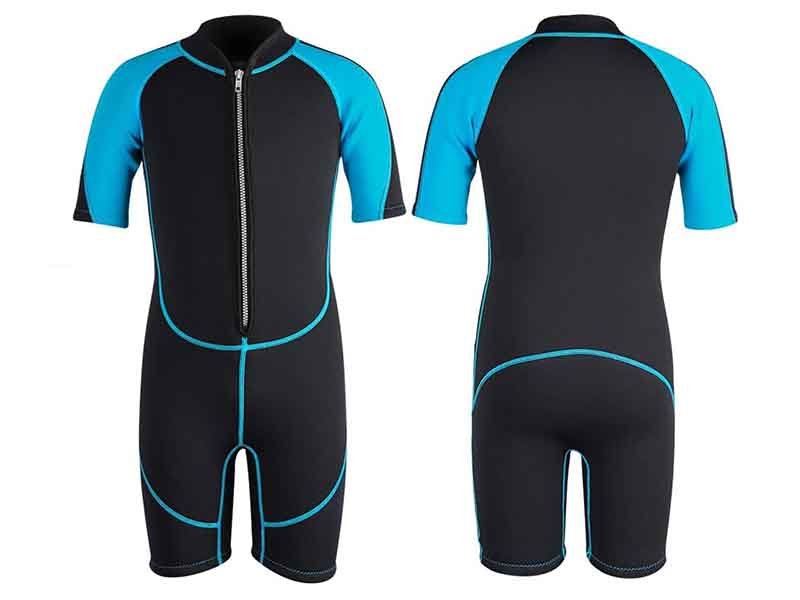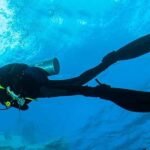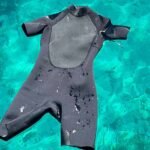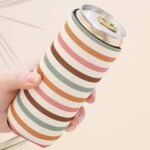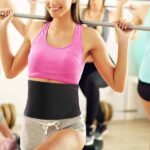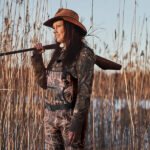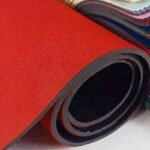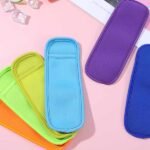Ever wondered why some wetsuits feel like a second skin while others barely keep you warm? In today’s booming watersports market, the choice of wetsuit manufacturer can make or break your next dive, surf session, or open-water swim. From material sourcing to stitch quality, every step in the production chain impacts fit, durability, and performance.
Wetsuit manufacturers are specialized factories that design, source, and assemble neoprene-based garments using techniques like flatlock stitching, glued seams, and blind-stitching. They offer services ranging from generic OEM runs to fully custom ODM or private-label production, with MOQs from as low as 50 pieces to bulk orders exceeding 10,000. Leading producers adhere to ISO/EN standards for tensile strength, waterproofing, and eco-friendly materials to ensure both quality and sustainability.
But beyond those specs lies a world of factory tours, material labs, and last-minute design tweaks. Picture this: a designer in Guangzhou racing to debug a seam issue before a buyer’s deadline in California… Ready to dive deeper? Let’s explore what really makes a wetsuit manufacturer tick.
What Criteria Should You Use to Evaluate Wetsuit Manufacturers?
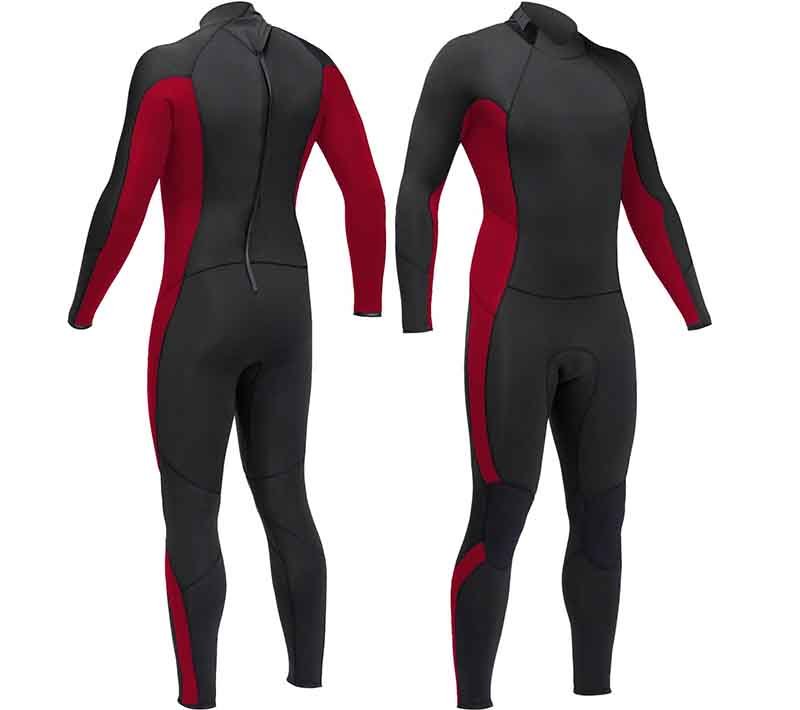
When evaluating wetsuit manufacturers, focus on material quality (neoprene type and GSM), production capacity, lead times, MOQ flexibility, factory certifications (ISO 9001, Oeko-Tex), and testing capabilities (tensile, water-seal, peel). Transparent pricing structures, clear communication channels, and after-sales support (warranty, repair) round out the picture. Assess sample turnaround, language proficiency, and cultural fit to ensure your partnership delivers consistently on time and to spec.
- Material Quality & Sourcing A wetsuit’s core is its neoprene—typically sourced in Japan, Korea, or China. CR (chloroprene rubber) grades vary in density (GSM), thickness (2–7 mm), and cell structure (open vs. closed). Quality producers maintain in-house labs to measure Shore hardness, cell uniformity, and nitrogen inflation levels. Ask for test certificates and batches to compare tear strength (≥ 200 kPa) and elongation (≥ 300%).
- Factory Certifications & Social Compliance ISO 9001:2015 ensures a quality management system, while Oeko-Tex® Standard 100 verifies absence of harmful chemicals. Leading manufacturers also hold SA8000 or BSCI social-audit reports, ensuring ethical labor practices. These certifications matter not just for PR but for consistent product quality and risk mitigation.
- Production Capacity & Lead Times Evaluate daily output (e.g., 5,000 suits/day) against your order volume and seasonality. Some factories ramp up labor by 30% during peak months; others outsource seams to secondary workshops, risking quality variance. Always verify peak vs. off-peak lead times — typical sample lead is 7–14 days, bulk 3–6 weeks.
- Technical Testing & R&D Top producers invest 5–10% of revenue into R&D labs, developing water-repellent coatings, jersey liners, and lighter-weight foams. They conduct hydrostatic head tests (> 1 m H₂O), peel tests (> 5 N/cm), and flame-retardant assays if required. A robust R&D pipeline translates to faster innovation and differentiated products.
20 Best Wetsuit Manufacturers

Here are 20 leading wetsuit manufacturers—each known for unique strengths, from cutting-edge materials to eco-friendly practices. You’ll find brands excelling in thermal insulation, ultralight flexibility, sustainable neoprene, custom design services, fast lead times, or industry-leading quality control. Whether you need bulk OEM runs or small private-label batches, this list will help you compare capabilities, price tiers, and service models at a glance.
| Manufacturer | Headquarters | Key Advantages |
|---|---|---|
| O’Neill | USA | Inventor of the modern wetsuit; renowned for Hyperfreak stretch and proprietary Technobutter foam. |
| Rip Curl | Australia | High-end E6 neoprene for lightweight warmth; strong surf-heritage R&D and global retail network. |
| Xcel | USA | Warm-water and cold-water collections; patented Thermo-Lite lining and customizable fit options. |
| Billabong | Australia | Durable, affordable entry-level suits; extensive size ranges and youth-focused lines. |
| Quiksilver | France | Fusion sealed seams, ergonomic paneling; broad distribution with rapid small-batch turnaround. |
| Patagonia | USA | Eco-friendly Yulex® natural rubber; full transparency in supply chain and Fair Trade–certified factories. |
| Cressi | Italy | European standard compliance (EN 14225-1); excellent dive-wear, freediving and triathlon wetsuits. |
| Mares | Italy | Advanced S-Flex neoprene and anatomical cut; integrated dive-computer pockets and high-pressure valves. |
| Scubapro | USA | Specialized scuba wetsuits with Thermocline® lining; strong warranty and repair network. |
| Henderson | USA | Premium wetsuit leather liners, ProPad® knee pads, and varied thickness for technical diving. |
| Bare | USA | Amphibious seals, UltraStretch neoprene, and customizable trim options; strong women’s fit focus. |
| Fourth Element | UK | Handcrafted in England; pioneering eco-neoprene, dry-flex seals, and modular layering systems. |
| Revolution Wetsuits | China | Fast sampling (7–10 days), low MOQ (50 pcs), full private-label services with competitive pricing. |
| Salvimar | Italy | Freediving-specific suits; Yamamoto neoprene, hydrophobic coatings, and ultra-streamlined cut. |
| Typhoon | UK | Mid-range pricing; excellent customer service; innovative seam-sealing and water repellent finishes. |
| Szoneier | China | 18+ years of neoprene R&D & manufacturing; free design, fast sampling, low MOQs (from 50 pcs), OEM/ODM & private-label with 100% quality guarantee. |
| Orca | New Zealand | Triathlon-focused with AquaZero™ liquid tape, sleeveless designs, and buoyancy-enhancing panels. |
| Blueseventy | UK | High-tech swimskins and wetsuits; Dragonfly™ fabric with exceptional hydrodynamics. |
| Aqua Lung | France/USA | Integrated hood suits, liquid seal cuffs, and wide distribution; strong heritage in scuba. |
| C-Skins | UK | Budget-friendly suits with Hydra-Fil lining; entry-level to mid-range, great for schools and rentals. |
Each of these manufacturers brings something different to the table—whether it’s grassroots surf innovation, eco-friendly materials, specialized dive technology, or rapid private-label production. Use this list to narrow down partners who match your product vision, budget, and sustainability goals.
Which Neoprene Types and Construction Methods Are Most Common?
The most popular neoprene types are limestone-based (eco-friendly), SBR (styrene-butadiene), and CR (chloroprene), offered in thicknesses from 2 mm to 7 mm. Common seam constructions include flatlock (breathable, budget-friendly), blind-stitch with sealed seams (water-tight), and ultrasonic welding (seamless, high-performance). Choice depends on target activity, temperature range, and price point.
Neoprene Variants Explained
- Limestone Neoprene: Derived from calcium carbonate, offers better insulation and sustainability credentials.
- SBR Neoprene: Lower cost, good flexibility, but less durable in saltwater.
- CR Neoprene: Premium rubber with uniform cell structure, superior stretch, and longevity.
Thickness Selection & Thermal Ratings
Wetsuit thickness (2/1 mm for tropical, 5/4/3 mm for temperate, 7 mm+ for cold) directly affects thermal resistance (R-value). Detail: a 5 mm suit typically provides 3.0 R at 20 °C, whereas 7 mm offers around 4.5 R at 10 °C. Balancing flexibility vs. insulation is crucial.
Seam Techniques & Their Trade-Offs
- Flatlock Stitch: Affordable, breathable; water seeps through at deeper dives.
- Blind-Stitch + Tape: Stitched only through half the material thickness, with glued and taped outer seams—excellent waterproofing at a moderate price.
- Glued & Blind-Stitched (GBS): Industry standard for mid-range suits; combines glued seams with blind-stitch for optimum seal and comfort.
- Ultrasonic Welding: Bonds neoprene without thread, eliminating needle holes. Premium, but requires specialized equipment and higher MOQ.
Innovations in Lining & Coatings
Super-stretch nylon, fleece, and titanium coatings (for solar heat gain) add performance layers. Factories offering laminated jersey not only bond layers with precision but also ensure peel strength > 5 N/cm per EN 14225-1.
How Do OEM, ODM, and Private-Label Services Differ?
OEM (Original Equipment Manufacturing) provides generic designs under your brand label with minimal design input. ODM (Original Design Manufacturing) grants you factory-designed templates that you can tweak. Private-Label partnerships offer fully custom patterns, logos, and accessories developed from scratch. MOQs typically start at 100 units for OEM, 200–500 for ODM, and 500+ for fully custom private-label runs. Lead times and tooling fees scale up with design complexity and sample iterations.
- OEM: Turnkey Simplicity In an OEM model, you select from established designs—neoprene thicknesses, colors, zip-styles—and the manufacturer handles pattern, cutting, and sewing. This option minimizes upfront costs and accelerates time to market (2–4 weeks sample).
- ODM: Balancing Speed & Uniqueness ODM gives you semi-bespoke control: factories present 10–20 core templates yearly. You adjust panel layout, color blocking, or zipper positions. Pricing for ODM includes minor design fees (USD 200–500/template) and MOQs around 200 pieces per style.
- Private-Label: Full Creative Control For brands seeking exclusivity, private-label services start with a blank slate: from CNC-cut pattern development to custom lining prints and branded hardware. Sample costs range USD 300–800, with lead times of 3–5 weeks for proto and 5–8 weeks for bulk. MOQs often begin at 500+ units due to CAD, tool, and die costs.
- Hidden Costs & Communication
- Tooling & Die Fees: One-time charges for custom molds or die-cuts (USD 50–300).
- Color Matching: Pantone matching incurs lab dip fees (USD 30–50/color).
- Revisions: Factories typically include two free rounds; subsequent changes cost USD 50–100/round. Clear communication protocols—weekly updates, bilingual staff, and digital approvals—prevent overruns and delays.
What Quality Control Processes Ensure Durable Wetsuits?
Quality control in wetsuit manufacturing includes raw-material inspections (density, cell structure), in-process checks (seam strength, glue penetration), and final tests (tensile strength ≥ 200 kPa, peel strength ≥ 5 N/cm, hydrostatic head ≥ 1 m H₂O). Accredited labs perform EN 14225-1 and ISO 22810 water-resistance tests. Manufacturers also run random-sample batch testing, document SPC charts, and issue QC reports outlining stitch density (12–14 stitches/inch) and surface finish quality before shipment.
Incoming Raw Materials Inspection
Every neoprene roll undergoes thickness measurement (± 0.1 mm tolerance), density checks (0.95–1.05 g/cm³), and microscopic cell-size analysis. Suppliers failing a 3-point inspection—visual defects, gas-filled cell uniformity, edge bonding integrity—are quarantined.
In-Process Quality Audits
- Seam Checks: Random seams are subjected to 90° peel tests (EN ISO 4624).
- Adhesive Strength: Glue penetration is gauged via cross-cut tests to ensure wet adhesion > 70 N.
- Stitch Density & Tension: Machines calibrated to 12–14 stitches per inch with uniform thread tension.
Final Product Testing
- Hydrostatic Head Test: Suit submerged to 1 m for 10 minutes; no leaks allowed.
- Flex Fatigue: Suits flexed 20,000 cycles at 5 °C to simulate wear.
- Color Fastness: Following ISO 105-C06, fabrics rated ≥ 4 on gray scale after 10 washes.
Documentation & Traceability
Factories implement ERP systems to trace each batch—from material batch number to operator ID. QC reports accompany every shipment, detailing inspection yields (typically > 98% pass rate), non-conformance logs, and corrective-action summaries.
How Are Pricing, MOQs, and Lead Times Structured?
Pricing hinges on neoprene type (USD 8–15/kg), lining choice (USD 2–6/m), seam method (flatlock vs. ultrasonic), and order volume. Sample MOQs start at 50–100 units; bulk orders at 200–500. Sample lead times are 7–14 days; bulk 3–6 weeks. Higher volumes unlock tiered discounts (5–15%), while complex customizations add one-time tool charges (USD 50–300). Seasonal surcharges (5–10%) may apply during peak Q3–Q4 production.
Cost Breakdown
| Cost Component | Range (USD/unit) | Notes |
|---|---|---|
| Neoprene Material | 3.00–7.00 | Depends on grade: SBR vs. limestone vs. CR |
| Lining (Jersey/Fleece) | 1.00–3.00 | Single vs. double-lined |
| Seams & Glues | 0.50–2.00 | Flatlock cheapest; welded highest |
| Hardware & Zippers | 0.50–1.50 | YKK vs. generic |
| Labor & Overhead | 2.00–5.00 | Region, skill level, factory scale |
| Packaging | 0.10–0.30 | Polybag & hangtag |
| Total (est.) | 7.10–18.80 |
MOQ Tiers & Discounts
- 50–200 pcs: No discount
- 201–500 pcs: 5% discount
- 501–1,000 pcs: 10% discount
- 1,001+ pcs: 15%+ discount
Lead Time Optimization
- Sample Phase: 7–14 days including pattern cutting and stitching.
- Bulk Production: 21–42 days, influenced by factory load and material availability.
- Express Options: For 20–30% surcharge, some offer 2-week bulk runs during off-peak.
Seasonal & Market Fluctuations
Neoprene prices can swing ± 10% based on crude oil and calcium carbonate costs. Factories typically lock in material pricing quarterly; buyers can hedge costs by ordering multi-month requirements in advance.
Are There Eco-Friendly Practices in Wetsuit Manufacturing?

Yes. Leading wetsuit makers incorporate recycled neoprene from post-consumer flooring (r‐neoprene), plant-based rubbers, and water-based adhesives. Solvent recovery systems capture > 95% of volatile organic compounds. Waste neoprene scraps are upcycled into neoprene mats or insulation panels. Factories pursuing ISO 14001 environmental management and Bluesign® approval demonstrate robust waste, energy, and emission controls to minimize ecological impact.
Recycled & Bio-Based Neoprene
Post-industrial scrap and recycled wetsuits are shredded and reformed into eco-neoprene, reducing landfill waste by 30–50 %. Some factories partner with materials innovators to blend algae-derived polymers, cutting fossil inputs by up to 20%.
Water-Based vs. Solvent-Based Adhesives
Traditional neoprene glue uses chloroprene solvents; water-based alternatives eliminate VOCs and improve workplace air quality. Leading producers reclaim > 90 % of water via closed-loop systems, reducing effluent by 80 %.
Energy & Emissions Management
Solar panels, LED lighting, and high-efficiency compressors cut factory energy use by 15–25 %. Carbon-offset programs and tree-planting initiatives further neutralize process emissions.
Circular Economy & Upcycling
Scraps from cutting yield > 20 tons/month of off-cuts, sold to third parties for flooring underlay or shoe insoles. Some brands even offer wetsuit take-back programs, closing the loop on end-of-life gear.
What Post-Production Support Can You Expect?
Post-production support often includes 12-month warranties covering seam failure, delamination, and zipper defects. Many manufacturers provide repair kits (glue, patches), phone-line tech assistance, and expedited reorder channels with locked-in pricing for one year. Co-marketing materials—high-resolution product images, spec sheets, and training videos—often accompany shipments. Transparent defect-reporting workflows ensure issues logged within 30 days trigger free replacements or refunds per agreed SLA.
- Warranty & Repair Services Standard warranties cover manufacturing defects; accidental damage is usually excluded. Manufacturers typically supply patch kits and glues for minor seam repairs. Major failures trigger free replacements if reported within warranty window.
- Reorder Convenience Many factories offer “order memory”—repeating last order specs, colors, and artwork with minimal proofing steps. This cuts sample prep time to 3–5 days on repeat runs.
- Technical Training & Documentation
- Spec Sheets: Detailed diagrams of panel layout, seam types, and material callouts.
- Instructional Videos: Guides on fit, care, and on-site repairs.
- Merchandising Assets: 360° product photos, lifestyle images, and CAD files for web or print.
- Communication & SLA Digital portals track order status in real time. Agreed SLAs often guarantee 24-hour email or messaging replies, ensuring small issues don’t delay entire shipments.
Conclusion & Inquiry
Choosing the right wetsuit manufacturer means balancing quality, cost, customization, and sustainability. From evaluating neoprene grades to understanding OEM vs. ODM models, you now have a roadmap to make informed decisions that fit your brand’s vision and your customers’ performance needs.
Ready to bring your next neoprene project to life? Contact Szoneier today for a free consultation, custom sample, and competitive quote. With over 18 years of experience, low MOQs, fast prototyping, and 100% quality assurance, we’re here to turn your wetsuit ideas into reality—on time and to spec. Send your inquiry to manager@neoprene-bag.com or visit https://neoprene-bag.com now!

